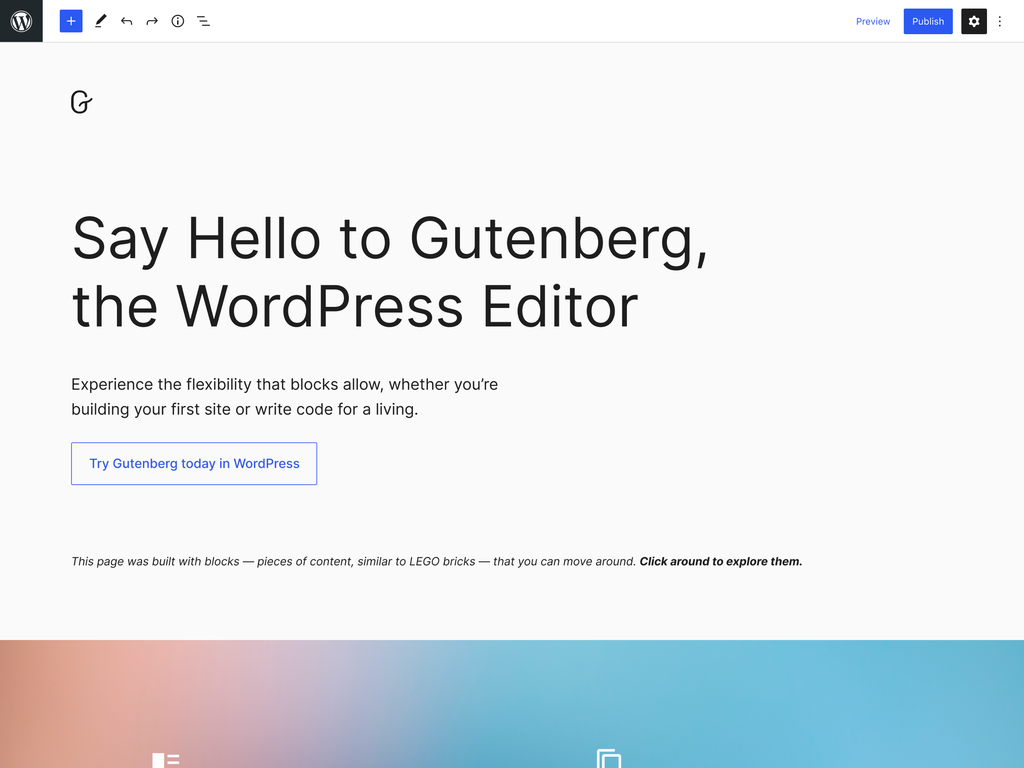Gutenberg is an editor for WordPress that was introduced in December 2018. It replaced the Classic Editor and provides users with a more modern and intuitive way to create and edit content on their WordPress websites.

With its block-based approach, Gutenberg allows users to create and arrange content using various types of blocks, such as text, images, videos, and widgets. It offers a range of customization options and has a growing ecosystem of custom blocks, plugins, and themes. In this article, we’ll explore the benefits and features of Gutenberg in WordPress and how it can improve your website’s performance.
What is Gutenberg?
Gutenberg is the name of the new WordPress editor that replaced the Classic Editor. Unlike the Classic Editor, which relied on a simple text editor with basic formatting options, Gutenberg is a block-based editor that allows users to create and arrange content using various types of blocks. Blocks are individual pieces of content, such as text, images, videos, and widgets, that can be added and arranged in a modular fashion. With Gutenberg, users can customize each block by adding styles, custom classes, and reusable templates.
Getting Started with Gutenberg
Gutenberg is included in the latest version of WordPress, so there’s no need to download or install any additional software. To get started with Gutenberg, simply open a new post or page in WordPress and you’ll be automatically directed to the Gutenberg editor. The Gutenberg editor has a modern and intuitive interface that’s easy to use, even for beginners. The editor is divided into three main sections: the block toolbar, the content area, and the sidebar.
The block toolbar is located at the top of the screen and contains all the available blocks that can be added to the content area. The content area is where all the blocks are added and arranged to create the page or post. The sidebar is located on the right side of the screen and contains various settings and options for each block.
Blocks in Gutenberg
The main feature of Gutenberg is the ability to add and arrange blocks to create content. Gutenberg offers a wide range of block types that can be used to create rich and dynamic pages. Some of the most common block types include:
- Paragraph: Used for adding text content, with options to format the text and add links and media.
- Image: Used for adding images and galleries, with options to adjust the size, alignment, and caption of the image.
- Video: Used for adding video content from various sources, such as YouTube and Vimeo.
- Embeds: Used for adding content from external sources, such as social media posts, maps, and audio files.
- Custom HTML: Used for adding custom HTML code for advanced customization.
Advanced Gutenberg Techniques
In addition to the standard blocks, Gutenberg also supports more advanced techniques for creating custom blocks and using block patterns. Custom blocks are blocks that are created using custom HTML, CSS, and JavaScript, and can be reused throughout the website. Block patterns are pre-designed layouts and structures that can be added to a page or post to speed up the design process.
Pros and Cons of Gutenberg
Like any new tool or technology, Gutenberg has its pros and cons. Some of the benefits of Gutenberg include:
- Improved content creation and editing workflow
- Modular and flexible design options
- Better compatibility with modern web technologies
- A growing community of developers and designers creating custom blocks and plugins
However, there are also some drawbacks to using Gutenberg, including:
- Learning curve for users who are used to the Classic Editor
- Compatibility issues with some plugins and themes
- Limited customization options for certain blocks
- Potential for slower website performance due to the use of more complex code
Despite these drawbacks, Gutenberg is generally considered to be a significant improvement over the Classic Editor. It provides users with a more modern and intuitive way to create and edit content, and it offers greater flexibility and customization options. As with any new technology, it may take some time to get used to, but it’s worth taking the time to explore and learn.
Conclusion
Gutenberg is a powerful and versatile editor that can help WordPress users create more dynamic and engaging websites. By leveraging the modular block-based approach, users can create rich and complex layouts without the need for complex coding skills. Whether you’re a blogger, a content marketer, or a web developer, Gutenberg offers a modern and flexible solution for creating content on WordPress. With its growing ecosystem of custom blocks, plugins, and themes, the possibilities for creating unique and engaging websites are endless.
